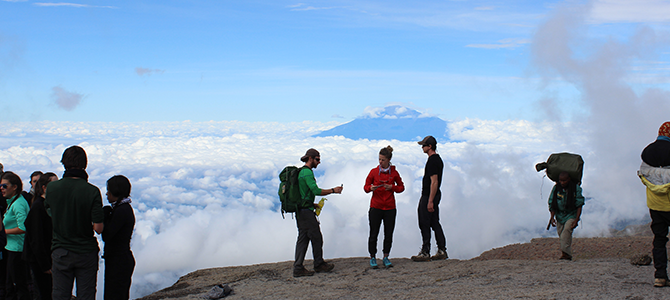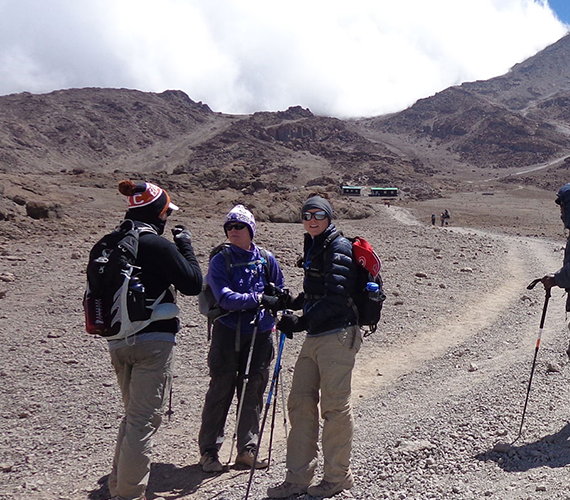For the vast majority of climbers it is the altitude, and not the physical strain of several days of extended trekking, that poses the biggest challenge when attempting to summit Kilimanjaro.
The growth in the number of people climbing Kilimanjaro in the last decade, along with the development of rapid ascent routes to the summit, has sometimes led prospective climbers to underestimate just how much of a challenge climbing Kilimanjaro can really be. Kilimanjaro is classed as an extreme altitude (5,500m+) mountain climb, but it is sometimes assumed that Kilimanjaro is a comparatively easy high altitude climb.


In fact, the failure rate among Kilimanjaro climbers is surprisingly high, with an estimated 40% of climbers failing to summit. In most failed summit attempts, the cause is altitude sickness.Before you attempt to climb Kilimanjaro it is therefore most important that you have a good grasp of the risks associated with climbing at altitude. Learning how to identify and manage the symptoms of altitude sickness is among the most important steps in preparing for a Kilimanjaro climb.
AMS - The Risk
Acute Mountain Sickness (AMS) is the name given to the conditions that arise when the body fails to acclimatise properly to the reduced oxygen in the atmosphere that you experience at altitude. Typically, effects are not felt until you climb over 3000m above sea level. These conditions can take several forms: headaches, dizziness, nausea, insomnia and loss of appetite are the most common concerns. In this respect, AMS in its mildest forms is not dissimilar to a bad hangover.
The main risks associated with AMS occur when it is not spotted early and these minor symptoms progress to the more serious conditions of HAPE (High Altitude Pulmonary Edema), caused by excess fluid in the lungs, and HACE (High Altitude Cerebral Edema), fluid on the brain. In the worst cases, these conditions can be fatal.
Keep in mind that all climbers will feel the effects of altitude to some degree. This is natural. Our bodies are not well adjusted to the high altitude, where reduced oxygen levels inhibit our normal physiological processes. Shortness of breath (dyspnoea) during exertion is universally felt by those climbing at very high or extreme altitudes; loss of appetite and insomnia are also common effects of altitude.
The fact that these symptoms are common can make it difficult to distinguish normal from abnormal effects of altitude, with the result that some climbers suffering from AMS push on in the belief that they are not at risk. As the symptoms of altitude sickness may not always be apparent to others, it is important that you are yourself able to recognise the symptoms of serious altitude sickness.
Generally, severe headaches (which do not go away with pain relief), extreme fatigue, prolonged dizziness, vomiting and dyspnoea while at rest are signs of serious AMS or HACE/HAPE and should prompt evacuation. But even the milder symptoms associated with AMS – tiredness, nausea, headaches – are a cause for concern if they are experienced for a prolonged period of time without abatement.
A final point to note about altitude sickness and its causes is that it is, to some degree at least, unpredictable. The effects of altitude do not appear to have much if any correlation to age and physical fitness. While some people seem to be more susceptible to its effects than others, everyone is at risk of suffering from AMS when climbing at altitude. Equally, there are steps that everyone can take to reduce this risk.